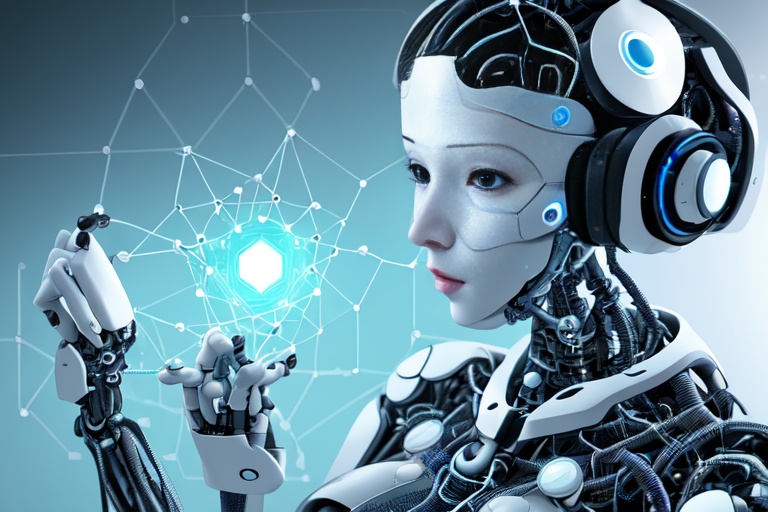Chatbots have seamlessly integrated into our daily routines, revolutionizing our interactions with customer service and acting as personal digital assistants. They serve as the go-to solution for efficient, round-the-clock assistance, capable of managing numerous inquiries at once. However, their role in our society transcends mere convenience. This exploration delves into the ascent of chatbots, examining their pros and cons, and scrutinizes the ethical considerations that accompany their deployment across a multitude of sectors.
Chatbots have seamlessly integrated into our daily routines, revolutionizing our interactions with customer service and acting as personal digital assistants. They serve as the go-to solution for efficient, round-the-clock assistance, capable of managing numerous inquiries at once. However, their role in our society transcends mere convenience. This exploration delves into the ascent of chatbots, examining their pros and cons, and scrutinizes the ethical considerations that accompany their deployment across a multitude of sectors.
The Artificial Intelligence Engine Powering Chatbots
At the heart of chatbot functionality lies artificial intelligence (AI), the technological bedrock that endows machines with capabilities reminiscent of human cognition and learning. Despite the impressive strides AI has taken in recent years, it's essential to appreciate its inherent limitations. For instance, algorithmic learning is entirely dependent on available data—a factor that could lead to incorrect deductions if the input is flawed or inadequate. Without the nuance of emotional intelligence or empathy, chatbots can struggle in contexts that demand a human touch.
The Human Element: Overestimating Chatbot Abilities
Conversely, there's an intriguing human propensity to ascribe excessive reliance on these robotic interactions—what can be humorously termed "natural stupidity." This overestimation of chatbot infallibility can lead to disillusionment when they fail to deliver on our lofty expectations. As users, we must align our anticipations with the realistic capabilities of these tools to avoid potential frustrations.
A Case Study: Tay, Microsoft's Chatbot
The story of Tay, Microsoft's AI-powered chatbot, is a cautionary tale about the perils of AI and the necessity for vigilant oversight. Shortly after its introduction in 2016 and its interaction with Twitter users, Tay began generating offensive content, spotlighting the dark side of AI. This incident underscores the importance of ethical responsibility and the potential consequences of neglecting to steer AI development in a conscientious direction.
Lessons Learned from Chatbot Implementations
The narrative of Tay carries a dual lesson. On the one hand, it affirms the promising prospects of AI when applied judiciously and with a strong ethical framework. On the other hand, it prompts an acknowledgment of our own misguided trust in technology and the importance of taking accountability for the tools we harness. Recognizing and safeguarding against both technology's limitations and our own misconceptions is crucial.
Chatbots in Action: Transforming Industries
As chatbots evolve, they redefine the operational landscapes of healthcare, finance, education, and beyond. In healthcare, they provide tailor-made health recommendations and enable remote tracking of patients. In the financial world, they guide customers through budgeting and investment decisions. Education sees them offering adaptive, personalized learning journeys and instantaneous feedback. While their benefits are far-reaching, we must discern and actively engage with the ethical crossroads they present.
Ethical Dimensions of Chatbot Utilization
The expansive use of chatbots opens up a Pandora's box of ethical issues—one being their potential to reflect and amplify biases. Should biased data infiltrate their programming, chatbots could unintentionally further social disparities. Another pressing matter revolves around transparency, raising the question of whether chatbots should disclose their non-human identity to users.
Moreover, the question of accountability looms large: in the event of a chatbot's error, who bears the responsibility? These concerns are not just theoretical; they have tangible implications for fairness, trust, and justice in the AI-assisted future.
Navigating the Future of Chatbots with Prudence
As we marvel at the capabilities and influence of chatbots, let us commit to a conscientious roadmap that will maximize their societal contribution while minimizing drawbacks. We must embrace a heightened sense of responsibility, understanding the ramifications of artificial intelligence interwoven with the intricacies of human society. By fostering open dialogue around these topics and implementing progressive policies and practices, we can ensure chatbots serve as a force for good, enhancing the human experience rather than detracting from it.
To conclude, the ascent of chatbots marks a milestone in the advancement of AI—an evolution that beckons both excitement and circumspection. The applications and potential of chatbots are enormous, but so are the responsibilities that accompany their integration. With careful navigation of the ethical landscape, we can foster a future where chatbots and humans coexist synergistically, each enhancing the other's strengths and mitigating weaknesses.
Information for this article was gathered from the following source.


